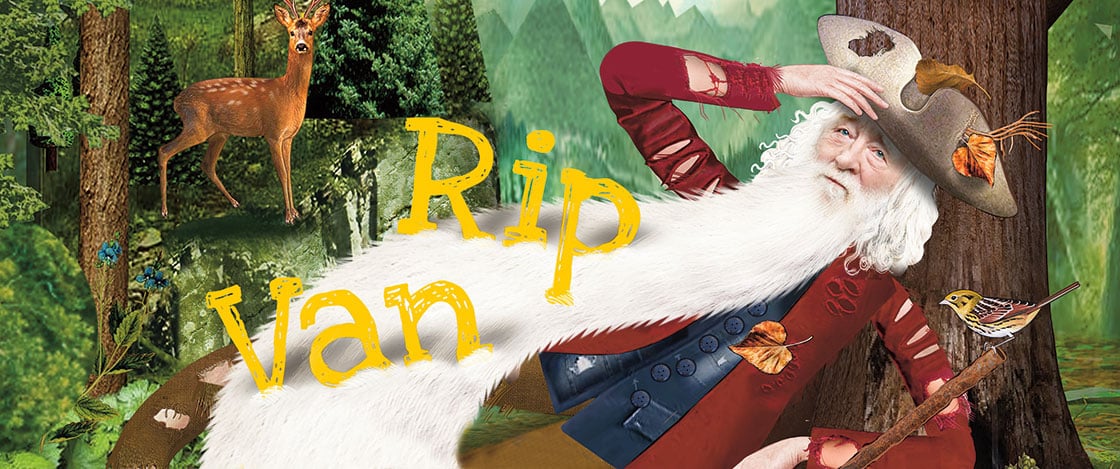Contest
Imagine you have an old uncle Rip who fell asleep 20 years ago and just woke up. What changes would most surprise him? Write an essay with at least three ideas.

A classic tale about a man who took a very long nap—and the strange things that happened as he slept.
Learning Objective: Students will read an adaptation of a classic story and analyze how the author uses setting to make a point about the passage of time.
The story of Rip Van Winkle has inspired countless films, TV shows, comics and more, including this toe-tapping 1961 song by the Devotions. Have your students work in groups to choreograph their own dances to it, retelling the story.
Dig deeper into the Revolutionary War connection with Lauren Tarshis’s book I Survived the American Revolution, 1776.
This Kiddle article, with lots of clickable links, provides kids with more facts and images related to the famous American author. (Kiddle is a kids’ version of Wikipedia.)
More About the Story
Skills
Setting, fluency, vocabulary, character, plot, mood, compare and contrast, inference, details, theme, research, explanatory writing
Complexity Factors
Levels of Meaning
This play, based on the classic story by Washington Irving, is about a man who falls asleep for 20 years and wakes to find that the world has changed dramatically. The changes in society illustrate how quickly America was growing and transforming in the 1700s.
Structure
The play is chronological and has six scenes as well as a prologue and an epilogue.
Language
There is some challenging academic vocabulary, such as lured, craggy, trudge, and emerge. The play also includes similes.
Knowledge Demands
Some background knowledge of the American Revolution will aid comprehension but is not required.
1. Preparing to Read
Watch a Video; Preview Text Features and Vocabulary (60 minutes)
2. Reading the Play
Assign parts and read the play aloud as a class. After reading, discuss the close-reading and critical-thinking questions.
Close-Reading Questions (20 minutes)
Critical-Thinking Questions
3. Skill Building
Featured Skill: Setting
Gather readers in a group to read the play. You might read some or all of the parts for them. Pause at the end of each scene to discuss what happened, and together write a one- or two-sentence synopsis.
Have students write their own Rip Van Winkle story about someone who falls asleep today and wakes up in 20 years. Encourage them to do research to find out what experts think life will be like then.
This play has many roles with varied amounts of speaking. For ELL students in your class, consider which role would be best: a group part, a small speaking role, or, if they’re ready for more of a challenge, a larger speaking part.
Have students read the play in small groups, with each taking multiple roles. Ask them to discuss the second critical thinking question among themselves, encouraging each other to come up with several ideas.